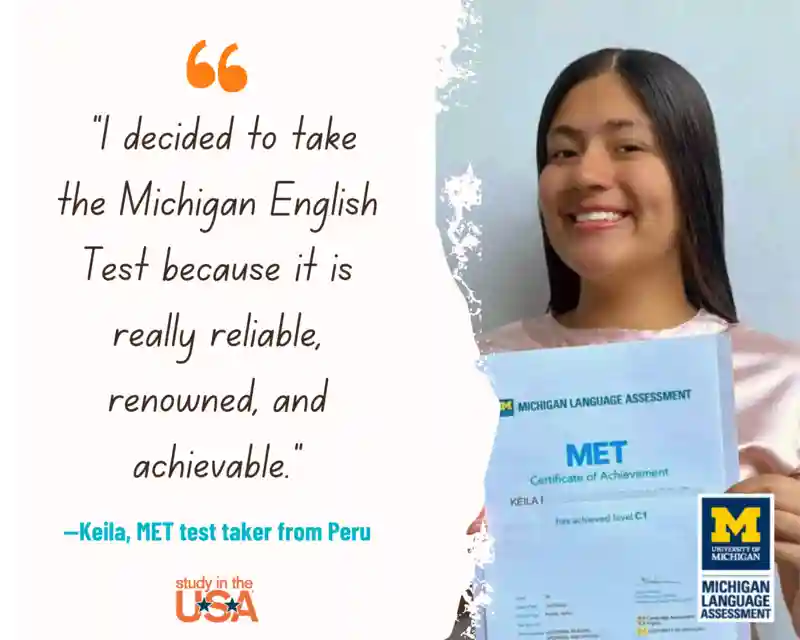Learning English Through Music

Did you know that music can be a useful tool while preparing to take an English-proficiency test? It’s true! It’s a great way to develop English vocabulary and improve your listening skills. Keep reading to find out more about this handy study hack.
How it helps
There are a variety of benefits to using music to improve English-language skills. For one, it’s a great way to learn slang words and popular phrases. It’s also less time consuming than other forms of studying English — like reading, taking classes or watching TV — and can be done on the go.
Additionally, the spelling of English words can sometimes be confusing for non-native speakers. But listening to music in English can help you learn the pronunciation of words (be careful though, because sometimes artists will change the pronunciation in songs — if you’re unsure, we recommend you search the word in an online dictionary that has audio clips).
How to pick the right song
One important thing to keep in mind: Pick songs you can listen to multiple times — repetition is an important tool when learning a new language. You may also want to give thought to which genre(s) you listen to. Here are some that are considered helpful for English-language learners…
By nature, pop songs are typically shorter and contain simple, repetitive language, as well as more modern terminology. Plus, the content of pop music is often easy to understand and follow along with.
All of these elements make pop music a good choice for English-language learners.
Folk and country songs are often slower paced and feature blunt metaphors, as well as short lines and stanzas. These artists also tend to favor more of a storytelling format in their songs and their music often focuses on everyday life.
If you’re looking for variety, give rock music a try. With multiple sub-genres — including but not limited to alternative, punk and classic rock — you’ll likely never run out of options. Rock music is also known for idioms (i.e. “under the weather,” “carry the world on your shoulders” and “it takes two to tango”), making it a good way to learn common English phrases.
To practice listening to faster paced language, check out hip hop. The genre also tends to feature complicated rhyme patterns, double entendres and slang words, making it a good way to learn common phrases and conversational English.
While they may not be your first choice in music, songs made for children can help you learn concepts like colors, animals, days of the week, nature, body parts and more. Some good examples: Head, Shoulders, Knees and Toes; Old Macdonald Had a Farm; Wheels on the Bus; and Row, Row, Row Your Boat.
Other ways to use music for studying
Here are some other tactics you can utilize to make the most of your listening sessions…
- Watch music videos with subtitles | Watching videos for English songs with English subtitles will help you associate how words sound versus how they’re written.
- Make a list of words/phrases you don’t know | Once you have your list, start looking up the meaning of these words and phrases, then practice using them in conversations.
- Sing karaoke | Find the karaoke versions of your favorite songs to practice your reading and memorization skills.
- Print out the lyrics | Reading the lyrics to a song while you listen to it can help you retain the words you’re hearing and reading. Pro tip: highlight the words you don’t know so you can look them up when you’re done listening to the song.
- Create a playlist | Remember, repetition is a good thing when learning a new language — so make a playlist of your favorite songs to listen to over and over again!
Gateway to American culture
If you’re planning on studying abroad in the United States, listening to music from American artists can be a great way to familiarize yourself with the country’s culture. And once you’re in the U.S., you’ll find that music is an integral part of American life, bringing together people from varied nations, cultures, and ethnicities. Take advantage of seeing live music, which could be at a concert venue, on campus, or even in a public place like a park or restaurant. You can also take a music-themed tour of the U.S. to really dig in to America’s musical roots — popular cities for music include Nashville, New York City, Austin, New Orleans, and Seattle.
Take the next steps
Start your journey to studying abroad by registering for the TOEFL iBT® test — then build your playlist to help you prep!
TOEFL®
Get matched to the best program for you
Let us know what you're looking for so we can find the best school for you.
Useful Articles
Проверьте эти учебные заведения




University of North Georgia
Typical cost per Year: $15,000—$20,000

Portland Community College
Typical cost per Year: $10,000 — $15,000

Glendale Community College
Typical cost per Year: $5,000—$10,000
Start your U.S. adventure with Study in the USA

Learn About U.S. education financing, housing, and more
Resources
Learn about American culture and education direct from our experts at Study in the USA. Read more














